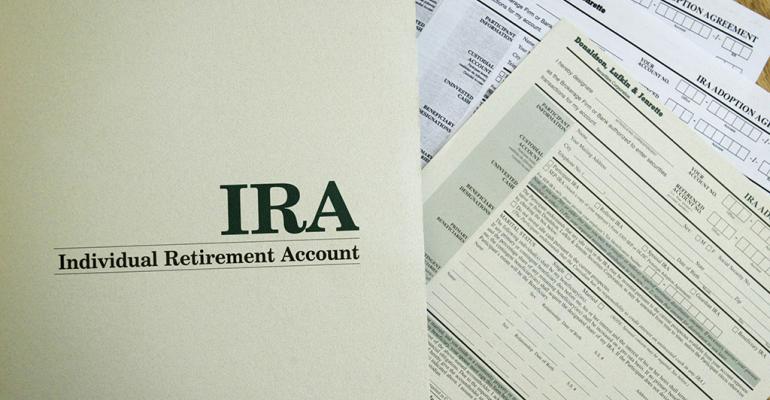In Morris v. Commissioner, T.C. Memo. 2015-82 (April 27, 2015), the Internal Revenue Service determined that petitioners Elroy Earl Morris and Darlene Morris failed to report taxable distributions in 2011 from an individual retirement account.
The IRA
Elroy’s father, George, established a traditional IRA and named Elroy as the primary and sole beneficiary. The Farm Bureau Life Insurance Co. of Michigan (Farm Bureau) served as custodian. In 2010, George received $500 in monthly distributions from his IRA. At the end of December 2010, the balance in the IRA was $96,442. George died on June 4, 2011, and on June 15, Elroy submitted a death claim to Farm Bureau and selected a lump sum option to settle the IRA. Elroy also attached a federal income tax withholding notice and election form, selecting the option that he didn’t want to have income tax withheld from the distribution.
Farm Bureau made two distributions from the IRA to Elroy in 2011 and reported each distribution on Form 1099-R (Distributions From Pensions, Annuities, Retirement or Profit-Sharing Plans, IRAs, Insurance Contracts). The first Form 1099-R reported a “normal distribution” of a taxable amount of $500 and reported tax withheld of $100. The second Form 1099-R reported a “death distribution” of a taxable amount of $95,484 and reported zero tax withheld.
Notice of Deficiency
In July 2011, in accordance with what he believed would be his father’s wishes, Elroy issued checks to two of his siblings, totaling $37,000. The payments came out of the $95,484 distribution Elroy received in the prior month. With the assistance of a local law firm, Elroy settled his father’s estate. A paralegal told him that there’d be no tax due on the IRA distribution. Elroy assumed that this meant that no tax would be due at all; however, the paralegal meant that there’d be no Michigan inheritance tax or federal estate tax due.
Elroy and Darlene filed a timely federal income tax return for 2011, which didn’t report either of the IRA distributions as gross income. On Sept. 30, 2013, the IRS sent them a notice of deficiency for $27,037 and a penalty of $5,387, because that the distributions were taxable income. Elroy and Darlene petitioned the Tax Court and argued that they don’t “solely owe this debt” and shouldn’t be “solely responsible” for it.
The Court’s Ruling
The Tax Court first noted that an IRS determination of a deficiency is presumed to be correct, and the burden of proof is on the taxpayer to prove that the IRS is erroneous. Under Internal Revenue Code Section 408(d)(1), any amount paid or distributed out of an individual retirement is included in a distributee’s gross income. Although there are exceptions, distributions to a beneficiary following the death of the account owner isn’t one of them.
Elroy didn’t argue that the IRA distributions weren’t subject to federal income tax. Rather, he argued that it would be inequitable to hold him solely liable for the tax, because he voluntarily shared the proceeds with his siblings from whom he’d most likely recover nothing. He also argued that he received erroneous advice from the law firm that he used to settle the estate.
While the Tax Court praised Elroy in his honorable behavior of giving his siblings what he believed to be were his father’s wishes, “his good conduct has no bearing on whether the IRA distributions were includible in his gross income under the Internal Revenue Code.” Moreover, the court found that although the advice he thought he received from the law firm might have affected his accuracy-related penalty liability, the advice was irrelevant regarding the taxable status of the IRA distributions. Accordingly, the Tax Court held that Elroy and Darlene failed to include the IRA distribution of $95,984 in their gross income for 2011. Thus, they were liable for the $27,037 deficiency. (The parties filed a post-trial stipulation that Elroy and Darlene wouldn’t be liable for any accuracy-related penalty.)





